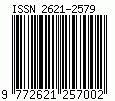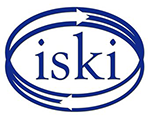Visual Narratives in Health Communication: Evaluating Comics as Tools for Health Literacy by the Indonesian Ministry of Health
DOI:
https://doi.org/10.12928/channel.v12i1.723Keywords:
health communication, communication strategy, comic, health literacy, visual storytellingAbstract
This study investigates the efficacy of comics as a strategic communication tool for health promotion, utilizing a qualitative analysis of literature and examples from the “Sehat Negeriku” website managed by the Indonesian Ministry of Health. The multifaceted nature of comics, incorporating visual storytelling and character-driven narratives, offers a unique method for conveying complex health messages in an accessible and engaging manner. This research identifies several key advantages of comics in health communication, including increased appeal and interest among diverse demographics, enhanced memory retention through visual cues, emotional engagement that deepens message impact, stimulated creativity and imagination, and the ability to reach a broad audience. Data collection involved a thorough review of existing literature and content analysis of health communication comics, focusing on their structure, content, and reception. The findings highlight how comics, by blending entertainment with educational content, can effectively reduce resistance to health messages, facilitate behavioral change, and contribute to public health knowledge. Furthermore, the study underscores the importance of considering cultural relevance and audience-specific characteristics in comic design to maximize their educational impact. This paper contributes to the understanding of visual communication in public health and supports the integration of comics into broader health promotion strategies.
References
Araya, B., Pena, P., & Leiner, M. (2021). Developing a health education comic book: the advantages of learning the behaviors of a target audience. Journal of Visual Communication in Medicine, 44(3), 87–96. https://doi.org/10.1080/17453054.2021.1924639
Attwood, A. I., & Gerber, J. L. (2020). Comic Books and Graphic Novels for the Differentiated Humanities Classroom. Kappa Delta Pi Record, 56(4), 176–182. https://doi.org/10.1080/00228958.2020.1813520
Bajraghosa, T. (2019). Komik Mandiri In Yogyakarta; Local Values Representation In Independent Comics. Humanities, Arts and Social Sciences Studies, 19, 387–404. https://doi.org/10.14456/hasss.2019.14
Cahyadi, D., Makassar, U. N., Aswar, A., & Makassar, U. N. (2023). EDITING. October. https://doi.org/10.13140/RG.2.2.26329.49768
Celentano, I., Winer, R. L., Jang, S. H., Ibrahim, A., Mohamed, F. B., Lin, J., Amsalu, F., Ali, A. A., Taylor, V. M., & Ko, L. K. (2021). Development of a theory-based HPV vaccine promotion comic book for East African adolescents in the US. BMC Public Health, 21(1), 1–12. https://doi.org/10.1186/s12889-021-11005-2
Chattopadhyay, D. (2019). Can comic books influence consumer awareness and attitude towards rape victims and perpetrators in India? The case of Priya’s Shakti. Journal of Graphic Novels and Comics, 10(1), 28–46. https://doi.org/10.1080/21504857.2017.1412992
Chiodini, J. (2019). Up in the air and laughing! How comic flight safety messages engage passengers. Travel Medicine and Infectious Disease, 30, 147–148. https://doi.org/10.1016/j.tmaid.2019.07.013
Cholifah, Y. W., & Adrianto, A. E. (2023). Analysis of a Persuasive Video on YouTube: A Collaboration between the Indonesian Ministry of Health and the Nahdlatul Ulama to Promote COVID-19 Vaccination in Indonesia. CHANNEL: Jurnal Komunikasi, 11(1). https://doi.org/10.12928/channel.v11i1.250
Gorrara, C. (2018). Black October comics, memory, and cultural representations of 17 October 1961. French Politics, Culture and Society, 36(1), 128–147. https://doi.org/10.3167/fpcs.2018.360106
Green, L. and Kreuter, M. (2005) Health program planning: An educational and ecological approach. 4th Edition, McGraw Hill, New York.
Hidayat, R., Saptodewo, F., & Winarni, R. W. (2023). Perancangan komik bergerak sejarah minuman Betawi bir pletok. Cipta, 1(3), 404–415. https://doi.org/10.30998/cipta.v1i3.1803
Khotimah, I. H. (2019). Komunikasi Verbal Dan Non Verbal Dalam Diklat. ResearchGate. https://www.researchgate.net/publication/337208719_KOMUNIKASI_VERBAL_DAN_NON_VERBAL_DALAM_DIKLAT
Jatmika, S. E. D., Maulana, M., Kuntoro, & Martini, S. (2019). Buku Ajar Pengembangan Media Promosi Kesehatan. Penerbit K-Media, Yogyakarta.
Juniartha, I. G. P. A., Sugiartha, I. N. G., & Ujianti, N. M. P. (2021). Keabsahan Hasil Cetak Screenshot Sebagai Alat Bukti dalam Pemeriksaan Perkara Perdata. Jurnal Konstruksi Hukum, 2(2), 401–405. https://doi.org/10.22225/jkh.2.2.3263.401-405
Kaluku, K., Sari, M. P., & Mahmud. (2023). Pengaruh Media Komik dan Poster pada Penyuluhan Gizi terhadap Pengetahuan Gizi Seimbang Anak Panti Asuhan. Jurnal Kesehatan Terpadu (Integrated Health Journal), 14(1), 20–28.
Kearns, C., & Kearns, N. (2020). The role of comics in public health communication during the COVID-19 pandemic. In Journal of Visual Communication in Medicine. https://doi.org/10.1080/17453054.2020.1761248
Kraenzle, C. (2020). Spirou’s transnational travels: historical memory and comics memory in Flix’s Spirou in Berlin. Journal of Graphic Novels and Comics, 11(1), 117–133. https://doi.org/10.1080/21504857.2019.1700144
Kurniati, D., & Jailani, M. S. (2023). Kajian Literatur : Referensi Kunci, State Of Art, Keterbaruan Penelitian (Novelty). Jurnal QOSIM : Jurnal Pendidikan, Sosial & Humaniora, 1(1), 1–6. https://doi.org/10.61104/jq.v1i1.50
Kurniati, D. P. Y. (2016). Modul Komunikasi Verbal dan Non Verbal. Program Studi Kesehatan Masyarakat, Universitas Udayana.
Kurniawan, M. I. (2022). Pengembangan komik digital untuk mencegah bullying pada siswa kelas VII. Jurnal Konseling Gusjigang, 8(1), 40–48. https://doi.org/10.24176/jkg.v8i1.7491
Kusuma, P., Dharsono, D., Marianto, M. D., & Guntur, G. (2022). Mascot: An alternate method to prevent the misuse of visual assets in Indonesia’s Covid 19 prevention campaign. International Journal of Visual and Performing Arts, 4(1), 53–60. https://doi.org/10.31763/viperarts.v4i1.656
Lubis, S. S. W. (2020). Media Komik Sebagai Sarana Meningkatkan Kemampuan Menulis. Bahastra, 5(1), 156–165. https://doi.org/10.30743/bahastra.v5i1.3365
Lukitowati, S., Hanum, A. N., & Yuliono, A. (2023). Nurturing Healthy Media Consumption Habits in Early Childhood: A Social Campaign Approach. CHANNEL: Jurnal Komunikasi, 11(2), 178–189. https://doi.org/10.12928/channel.v11i2.549
Marliati, A. (2020). Kajian Simbol dalam Penokohan pada Novel Negeri 5 Menara Karya Ahmad Fuadi: Tinjauan Semiotik Peirce Sebagai Alternatif Bahan Ajar Bahasa dan Sastra Indonesia di SMA. Wistara: Jurnal Pendidikan Bahasa Dan Sastra, 1(2), 210–220. https://doi.org/10.23969/wistara.v1i2.2311
Maryani, Y. (2020). Pengembangan Komik sebagai Media Pembelajaran Teks Biografi Dalam Upaya Meningkatkan Minat Baca Pada Siswa Kelas X SMKN 3 Bandung. Wistara: Jurnal Pendidikan Bahasa Dan Sastra, 3(1), 45–49. https://doi.org/10.23969/wistara.v3i1.2563
Marta, R. F., Kurniasari, N., Salim, M., Widaningsih, T. T. (2023). Anxiety by COVID-19 Death Reports: Explanatory Study among Jakarta’s Muslim Young Adults. Mediator: Jurnal Komunikasi 16 (1) https://doi.org/10.29313/mediator.v16i1.2215
Masnaani, A. (2018). Makalah Strategi Promosi Kesehatan oleh Andi Masnaani, SKM, M.Kes. Retrieved from https://bktm-makassar.org/wtp-admin/assets/datas/publications/MAKALAH_STRATEGI_PROMOSI_KESEHATAN.pdf
Mataram, S. (2017). Kajian Perspektif Bahasa Rupa Silent Manga. Prosiding Pers Atlantis, 36. https://doi.org/https://doi.org/10.2991/bcm-17.2018.32
Medina, M. I. (2022, May 18). Visual Storytelling: Apa Itu, Elemen, Manfaat, Cara, dan Tips Membuat. Glints Blog. https://glints.com/id/lowongan/visual-storytelling-adalah/
Notoadmodjo, S. (2012). Promosi Kesehatan & Prilaku Kesehatan. Jakarta, Rineka Cipta
Nuriza, A. I., Suardana, I. N., & Selamet, K. (2022). Pengembangan Komik IPA Terpadu Tema “Menjaga Kesehatan Di Masa Pandemi COVID-19” dengan Model Webbed. Jurnal Pendidikan Dan Pembelajaran Sains Indonesia, 5(3).
Omilion-Hodges, L. M., & McClain, K. L. (2016). University use of social media and the crisis lifecycle: Organizational messages, first information responders’ reactions, reframed messages, and dissemination patterns. Computers in Human Behavior, 54, 630–638. https://doi.org/10.1016/j.chb.2015.06.002
Paramasari, S. N., & Nugroho, A. (2021). Strategi Komunikasi Kesehatan dalam Upaya Membangun Partisipasi Publik pada Masa Pandemi Covid-19. Jurnal Lensa Mutiara Komunikasi, 5(1), 123–132. https://doi.org/10.51544/jlmk.v5i1.2036
Pramesti, U. D., Sunendar, D., & Damayanti, V. S. (2020). Komik Strip Sebagai Media Pendidikan Literasi Kesehatan Dalam Pembelajaran Bahasa Indonesia Pada Masa Pademi Covid-19. Bahterasia: Jurnal Ilmiah Pendidikan Bahasa Dan Sastra Indonesia, 1(2), 45–54. Retrieved from https://jurnal.umsu.ac.id/index.php/BAHTERASIA/article/view/5135
Prasetiawan, H., & Alhadi, S. (2018). Komik Strip Solusi Inovasi Gerakan Anti Bullying. Proceeding of The 8th University Research Colloquium 2018: Bidang Pendidikan, Humaniora Dan Agama, 310–315. Retrieved from https://repository.urecol.org/index.php/proceeding/article/view/448
Putra, R. W. (2022). Manga Matrix’s approach to creating Indonesian ghost game visual characters on Dreadeye VR. International Journal of Visual and Performing Arts, 4(1), 39–46. https://doi.org/10.31763/viperarts.v4i1.655
Ramadhani, N., & Putra, R. D. (2017). Komik Strip Sebagai Media Kritik Sosial: Studi Pada Akun Instagram @Komikin_Ajah. CoverAge: Journal of Strategic Communication, 8(1), 26-38. Retrieved from https://journal.univpancasila.ac.id/index.php/coverage/article/view/580
Rokom. (2021, January 20). Mudik online. Sehat Negeriku. https://sehatnegeriku.kemkes.go.id/baca/komik-sehat/20200605/1936490/mudik-online/
Rokom. (2021, January 20). Pasar. Sehat Negeriku. https://sehatnegeriku.kemkes.go.id/baca/komik-sehat/20200805/2836543/pasar/
Rosidah, C. T., Putrayasa, I. B., Wesnawa, I. G. A., & Candiasa, I. M. (2022). Thematic comic to cultivate eco-literacy for young learners. Kasetsart Journal of Social Sciences, 43(3), 735–740. https://doi.org/10.34044/j.kjss.2022.43.3.27
Sabri, S., & Adiprabowo, V. D. (2022). Nonverbal Communication Through Visual Storytelling of Leaving Home Animated Films. Proceedings of International Conference on Communication Science, 2(1), 181–186. https://doi.org/10.29303/iccsproceeding.v2i1.99
Salam, B., Prasetyo, I. J., & Susilo, D. (2018). IInterpretasi dan Makna kritik sosial dalam “Komik Strip untuk Umum (Kostum)” periode 1 Desember – 31 Desember 2017. Lontar: Jurnal Ilmu Komunikasi, 6(2), 96. https://doi.org/10.30656/lontar.v6i2.949
Salim, M., Wahyuni, N., Marta, R. F., Hariyanti, N., & An Nur, F. (2022). BPJS Kesehatan’s interpersonal communication goals in handling participant complaints. Jurnal Komunikasi Pembangunan, 21(01), 1-16. https://doi.org/10.46937/21202341327
Salim, M., Wibowo, A. A., & Hariyanti, N. (2023). Kajian Kebijakan Komunikasi Kesehatan Global Terkait Vaksinasi COVID-19. In Komunikasi dan Isu Global Kontemporer (pp. 83-98). Penerbit Samudra Biru. ISBN: 978-623-261-557-1
Sukma, B. W., Salim, M., Marta, R. F., Andriani, F., & Briandana, R. (2022). Effective organizational communication and its role in enhancing employee job satisfaction during the COVID-19 pandemic. Proceedings of International Conference on Communication Science (ICCS). https://doi.org/10.29303/iccsproceeding.v2i1.69
Nababan, R. S., & Ardhianto, P. (2022). A study of the COVID-19 infographic design issued by Indonesian Ministries in online media. International Journal of Visual and Performing Arts, 4(2), 99–110. https://doi.org/10.31763/viperarts.v4i2.804
Shoimah, L. (2023). Peningkatan Kemampuan Menulis Cerita Fantasi Melalui Media Pembelajaran Komik Nonverbal Pada Mata Pelajaran Bahasa Indonesia. Jurnal Pena Kita. 1(1). https://penakita.or.id/index.php/Journal/article/view/7
Sonke, J., Sams, K., Morgan-Daniel, J., Schaefer, N., Pesata, V., Golden, T., & Stuckey, H. (2021). Health Communication and the Arts in the United States: A Scoping Review. American Journal of Health Promotion, 35(1), 106–115. https://doi.org/10.1177/0890117120931710
Sugiyo, D. (2018). Komunikasi Kesehatan: Aplikasi Media Sosial Dan Media Pengirim Pesan. Universitas Muhammadiyah Yogyakarta, 1–68. ttp://repository.umy.ac.id/handle/123456789/31586?show=full
Wisudawati, R., Puspitasari, Y. D., & Pratama, H. (2022). Penerapan Pembelajaran Berbasis Komik untuk Meningkatkan Hasil Belajar Ilmu Pengetahuan Alam Siswa Sekolah Dasar. Jurnal Kiprah, 10(2), 1–9. https://doi.org/10.31629/jk.v10i2.5097
World Health Organization. (2023). WHO Principles for Effective Communications. World Health Organization. https://www.who.int/about/communications/principles
Downloads
Published
How to Cite
Issue
Section
License
Copyright (c) 2024 CHANNEL: Jurnal Komunikasi

This work is licensed under a Creative Commons Attribution-ShareAlike 4.0 International License.






